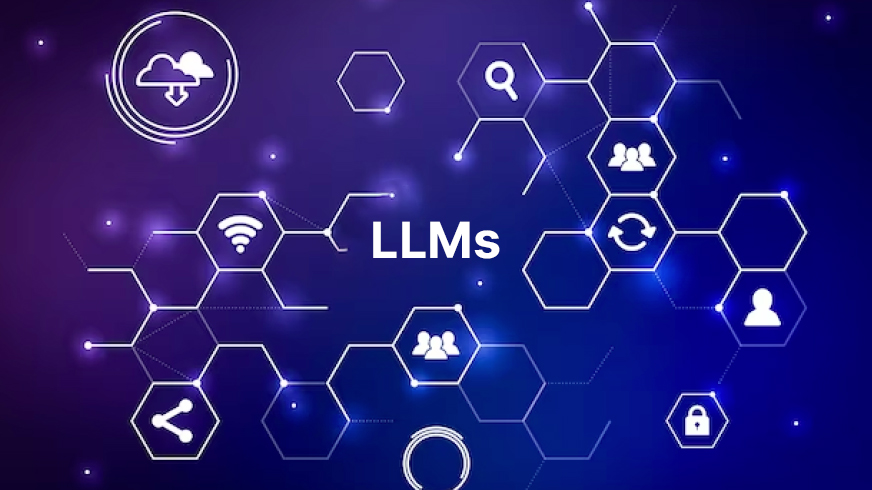Introduction
Think about a society that knows, evolves and works well without human interaction, as children who do not need a tutor to pass an exam. While this sounds like a scene from a Transformers movie, it is the vision of the future of the machine’s learning process that artificial intelligence brings to us. Large language models capable of self-training. In the following article, seven new methods will be introduced which help the LLMs to train themselves and are more intelligent, faster, and more versatile than before.

Learning Outcomes
- Understand the concept of training LLMs without human intervention.
- Discover seven different methods used for autonomous training of LLMs.
- Learn how each method contributes to the self-improvement of LLMs.
- Gain insights into the potential advantages and challenges of these methods.
- Explore real-world applications of autonomously trained LLMs.
- Understand the implications of self-training LLMs on the future of AI.
- Be equipped with knowledge on the ethical considerations surrounding autonomous AI training.
Table of contents
7 Ways to Train LLMs Without Human Intervention
Let us now look into the 7 ways to train LLMs without human intervention.
1. Self-Supervised Learning
Self-supervised learning is the cornerstone of autonomous LLM training. In this method, models generate their own labels from input data, removing the need for manually labeled datasets. For instance, by predicting missing words in a sentence, an LLM can learn language patterns and context without explicit guidance. This technique allows LLMs to train on vast amounts of unstructured data, leading to more generalized and robust models.
Example: A model might take the sentence “The cat sat on the _” and predict the missing word, “mat.” By continuously refining its predictions, the model improves its understanding of language nuances.
2. Unsupervised Learning
Unsupervised learning takes self-supervised learning a step further by training models on data without any labels at all. LLMs identify patterns, clusters, and structures within the data on their own. This method is particularly useful for discovering latent structures in large datasets, enabling LLMs to learn complex representations of language.
Example: An LLM might analyze a large corpus of text and categorize words and phrases based on their semantic similarity, without any human-defined categories.
3. Reinforcement Learning with Self-Play
Reinforcement learning (RL) in its rudimentary sense is a process where an agent is enabled to make decisions with respect to an environment in which it operates and acquires rewards or punishments. In self-play, an LLM can teach itself games against necron versions or other parts of itself. Accomplishments in every one of these subject areas will be possible with this approach since models can modify its strategies in tasks such as language generation, translation as well as conversational AI daily.
Example: An LLM could simulate a conversation with itself, adjusting its responses to maximize coherence and relevance, leading to a more polished conversational ability.
4. Curriculum Learning
Curriculum learning mimics the educational process, where an LLM is trained progressively on tasks of increasing difficulty. By starting with simpler tasks and gradually introducing more complex ones, the model can build a strong foundation before tackling advanced problems. This method reduces the need for human intervention by structuring the learning process in a way that the model can follow autonomously.
Example: An LLM might first learn basic grammar and vocabulary before progressing to complex sentence structures and idiomatic expressions.
5. Automated Data Augmentation
Data development involves creating new training models from existing data, a process that can be automated to help LLMs train without human involvement. Strategies such as paraphrasing, synonymous substitution, and sentence inversion can generate a variety of training contexts, allowing LLMs to learn actively from limited contexts in
Example: For instance, a sentence like “The dog barked loudly” could be written as “The dog barked loudly” and as such, provide the LLM with inputs that would help the learning process.
6. Zero-Shot and Few-Shot Learning
Zero-shot and short-shot courses enable LLMs to apply their existing skills, and perform the tasks for which they have been explicitly trained. These techniques reduce the need for large amounts of human-supervised training data. In a zero-shot study, the model produces a simulation without a prior sample, while in a short study, it learns from a minimum number of samples.
Example: An LLM trained in English writing may be able to translate simple Spanish sentences into English with little or no prior exposure to Spanish, thanks to his or her understanding of language patterns so.
Also Read: Know about Zero Shot, One Shot and Few Shot Learning
7. Generative Adversarial Networks (GANs)
GANs consist of two models: a generator and a discriminator. The generator creates data samples, while the discriminator evaluates them against real data. Over time, the generator improves its ability to create realistic data, which can be used to train LLMs. This adversarial process requires minimal human oversight, as the models learn from each other.
Example: A GAN could generate synthetic text that is indistinguishable from human-written text, providing additional training material for an LLM.
Conclusion
The course towards acquired LLM training is a step progress for the AI specific field. With the use of methods such as self-supervised learning, reinforcement learning with self-play and GANs, LLMs can self-train themselves to a certain extent. All these advancements not only improve the practicality of large-scale AI models and provide new directions for development. Thus, it is crucial to turn our attention to the moral effects and make sure that these technologies are growing up as ethical as possible.
For a deeper dive into generative AI and related techniques, you can learn more by enrolling in the Pinnacle Program by Analytics Vidhya. This program offers comprehensive training and insights that will equip you with the skills needed to master the latest AI advancements.
Frequently Asked Questions
A. The primary advantage is scalability, as models can learn from vast amounts of data without the need for time-consuming and expensive human labeling.
A. Self-supervised learning generates labels from the data itself, while unsupervised learning doesn’t use any labels and focuses on finding patterns and structures within the data.
A. Yes, in many cases, LLMs trained with methods like self-play or GANs can achieve superior performance by continuously refining their knowledge without human bias.
A. Key concerns include the potential for unintended biases, lack of transparency in the learning process, and the need for responsible deployment to avoid misuse.
A. Curriculum learning helps models build foundational knowledge before tackling more complex tasks, leading to more effective and efficient learning.





